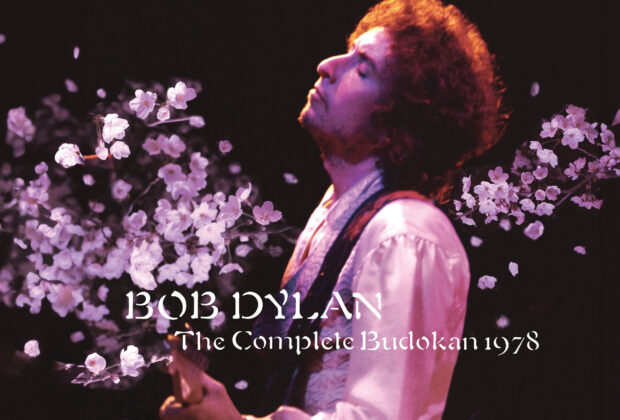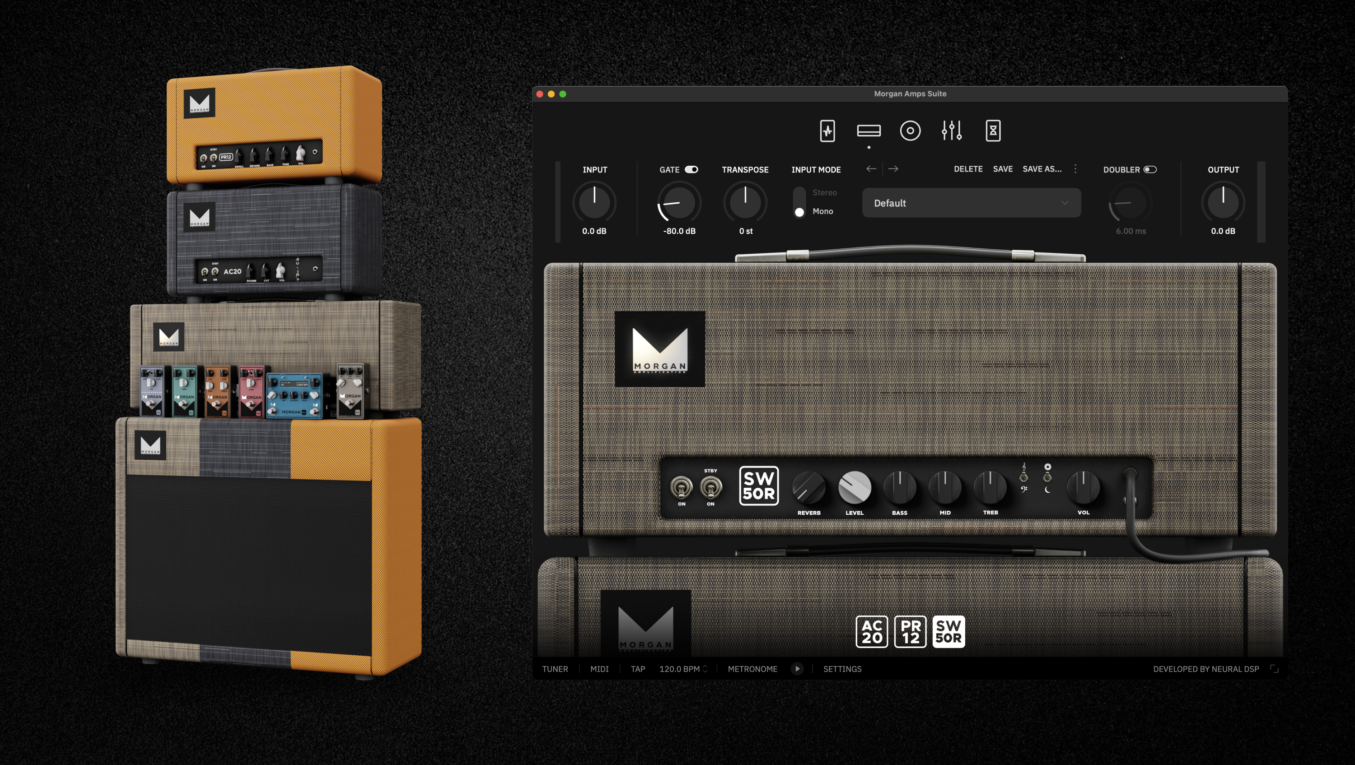As Bob Dylan continues his November-December 2023 North American tour, there’s a new expanded reissue of Bob Dylan - The Complete Budokan 1978, and recently published and revised books on his remarkable career: The Dylan Tapes: Friends, Players, and Lovers Talkin’ Early Bob Dylan, by Anthony Scaduto, Bob Dylan: Mixing Up The Medicine, written and edited by Mark Davidson and Parker Fishel, The Double Life of Bob Dylan Volume 2: 1966-2021: ‘Far away from Myself’ from Clinton Heylin, and a new three-part 50th Anniversary series edition of Michael Gray’s Song & Dance Man: The Art of Bob Dylan.

Columbia Records and Legacy Recording, the catalog division of Sony Music Entertainment, will release Bob Dylan - The Complete Budokan 1978. A deluxe box set celebrating Bob Dylan's 1978 world concert tour and the 45th anniversary of the artist's first concert appearances in Japan, The Complete Budokan 1978 presents two full shows originally recorded on 24-channel multitrack analog tapes at Tokyo's Nippon Budokan Hall on February 28 and March 1, 1978 and offers fans 36 previously unreleased Dylan performances.
The Bob Dylan World Tour 1978 marked the artist's first international concert dates since 1966 and his first live shows since the Rolling Thunder Revue blasted through North America in 1975-76. A major international musical event, the year-long tour found Bob Dylan performing 114 shows in Asia, Oceania, North America and Europe, to a combined audience of two million fans.
The tour launched in February 1978 with eleven historic performances: Dylan' first-ever concerts in Japan which included eight shows at the revered Nippon Budokan Hall in Tokyo. Two of the Budokan shows--February 28 and March 1, 1978--were recorded on 24-channel multi-track analog tape with 22 performances excerpted from those shows appearing on Bob Dylan At Budokan, a 2LP set first issued on Columbia Records as a Japan-only release in November 1978, followed by a global release in April 1979 in response to widespread demand. The Complete Budokan 1978 marks the first time any of Dylan's complete performances from his 1978 world tour have been officially available.
For his 1978 performances, Dylan (rhythm guitar, harmonica, vocals) led an ensemble featuring Billy Cross (lead guitar), Ian Wallace (drums), Alan Pasqua (keyboards), Rob Stoner (bass, vocals), Steven Soles (acoustic rhythm guitar, vocals), David Mansfield (pedal steel, violin, mandolin, guitar, dobro), Steve Douglas (saxophone, flute, recorder), Bobbye Hall (percussion), Helena Springs (vocals), Jo Ann Harris (vocals), and Debi Dye (vocals). The original Bob DylanAt Budokan album was produced by Don DeVito, who also helmed Dylan's Street-Legal, recorded and released during the 1978 world tour, featuring the same musicians.
Chief engineer Tom Suzuki says, "We mixed the record with the keyword 'passion' in mind. The result is a mix that surpasses the original 1978 release, providing a crisper and clearer sound where each instrument and Bob Dylan's voice are distinctly audible."
Heckel Sugano says, "The completed album documents the remarkable sound of the legendary Budokan shows that are forever etched in history. We tried to faithfully reproduce the sound the Japanese audience would have heard in the concert hall."
Fifty-years and hundreds of Dylan books later, many still consider it one of the very best: Rolling Stone called it “Monumental, endlessly illuminating.” Greil Marcus noted it as: “Extraordinarily useful… I have always admired Gray’s reach, tone, and acuity but the research here is just amazing.” While The Observer, said: “Wonderful… The best book there is on Dylan, now better than ever.”
The original Song & Dance Man covered Dylan’s work through 1970’s Self Portrait, but was expanded in a new edition in 1982, and again in 2000 – growing to over 900 pages and covering Dylan’s work through 1997’s Time Out Of Mind. But Song & Dance Man has been out of print for over a decade, during which time Bob Dylan won a Nobel Prize for Literature, continued delivering critically lauded records, and earned a new generation of fans while sustaining older ones in his seventh decade as an artist. The 50th Anniversary Series puts every word of Song & Dance Man back into print, but in an accessible three-volume format: VOLUME 1: Language & Tradition – Explores the ways that Dylan’s early writing relates to folk music, blues, rock and mainstream literature. This is the groundbreaking approach to Dylan as an artist rather than a folk-singer or a pop star that earned the book’s early reviews & reputation. Michael Gray is a critic, writer, public speaker & broadcaster recognized as a world authority on the work of Bob Dylan, and as an expert in Rock ‘n’ Roll history.

He is the author of Song & Dance Man: The Art of Bob Dylan, The Bob Dylan Encyclopedia, Outtakes on Bob Dylan: Selected writings 1967-2021, Mother! The Story of Frank Zappa, Hand Me My Travelin’ Shoes: In Search of Blind Willie McTell, and others. He has spoken at the Rock ‘n’ Roll Hall of Fame, at Universities across Europe and the United States.
Over the last 48 years I’ve conducted interviews with Bob Dylan’s friends and musical associates. These encounters remind me, and I hope you as well, about the still fascinating, evolving expedition of Dylan.
Johnny Cash: I became aware of Bob Dylan when the Freewheelin’ album came out in 1963. I thought he was one of the best country singers I had ever heard. I always felt a lot in common with him. I knew a lot about him before we had ever met. I knew he had heard and listened to country music. I heard a lot of inflections from country artists I was familiar with. I was in Las Vegas in ‘63 and ‘64 and wrote him a letter telling him how much I liked his work. I got a letter back and we developed a correspondence. We finally met at Newport in 1964. It was like we were two old friends. There was none of this standing back, trying to figure each other out. He’s unique and original. I keep lookin’ around as we pass the middle of the ’70s and I don’t see anybody come close to Bob Dylan. I respect him. Dylan is a few years younger than I am but we share a bond that hasn’t diminished. I get inspiration from him.
Jackson Browne: What Bob Dylan did for me, everybody and our generation it will never have to be done again, you know. The way he opened up our thinking and our feeling and our view of the world only has to be done once. Maybe it’s done in other fields like film and painting and other art. As a people we’re constantly growing, expanding but the changes that Bob Dylan brought to rock ‘n’ roll and songwriting are permanent. They’re part of us. People who are just being born into it now are being born into a world that wasn’t that way until Bob Dylan made it that way. It’s a particular skill to write something in a few words that speaks volumes. It is very difficult to say how I feel and how I think about Bob Dylan in a few words.
Howard Kaylan: All of us, as singers and performers, keep those great songs in the pipeline so they are not forgotten. It doesn’t have to be a great Bob Dylan song or a Tim Hardin song or even a great Leiber and Stoller song. If it’s great and forgotten you kind of feel like you are a missionary as far as getting those things to the public.
Al Kooper: No one talks about Bob’s piano playing because they don’t know. Bob had a very unusual way of playing in that he didn’t use his pinkies. So, both his pinkies were up in the air when he played the piano and that’s very interesting to me. It was very interesting looking to watch that. I used to really get a kick out of that. I played organ on “Like a Rolling Stone.” (Pianist) Paul Griffin was a big influence on me as well. Paul came from the Baptist church. On Highway 61 Revisited we did the tracks to ‘Tombstone Blues’ and ‘Queen Jane Approximately’ in one day.
D.A. Pennebaker: I think that it will take 50 or 100 years to really digest Dylan. He’s like John Brown. He’s out there singing a song and he’s gonna sing it until he drops. And it’s like he doesn’t have to understand it completely. That’s what he’s going to do. The concerts now are like transfigurations but they’re interesting because you can’t sit on a talent like that whatever you do is going to be interesting.
Marianne Faithfull: I had never seen a person like Bob Dylan Never in my wildest dreams could have imagined anyone like Bob in 1965. His brain, but I was frightened. I didn’t know they were probably more scared of me. I don’t know. He played me the album Bringing It All Back Home himself on his own. It was just amazing. And I worshipped him anyway. That was where I got very close to Allen (Ginsberg). I spent some time with Allen and Bob during Dont Look Back.
Allen Ginsberg: I don't think I would have been singing if it wasn't for younger Dylan. Ginsberg. I mean he turned me on to actually singing. I remember the moment it was. It was a concert with Happy Traum that I went to and saw in Greenwich Village. I suddenly started to write my own lyrics, instead of Blake. Dylan's words were so beautiful. The first time I heard them, I wept. I had come back from India, and Charlie Plymell, a poet I liked a lot in Bolinas, at a welcome home party played me Dylan singing “Masters of War” from The Freewheelin' Bob Dylan, and I actually burst into tears. It was a sense that the torch had been passed to another generation. And somebody had the self-empowerment of saying, 'But I'll know my song well before I start singin’. Dylan said that Kerouac’s Mexico City Blues had inspired him to be a poet. That was his poetic inspiration. So, I think what happened is that we followed an older tradition, a lineage, of the modernists of the turn of the century and continued their work into idiomatic talk and musical cadences and returned poetry back to its original sources and actual communication between people. We were built for it.
Robbie Robertson: Who would think in their wildest imagination that Tin Pan Alley was a real place and the Brill Building and Donnie Kirshner’s thing. All of it was actually in a place you could go. And the doors were golden when you walked in. And inside there in all these rooms were people who wrote songs and sent them out to the whole wide world. Then, the other door was Bob Dylan who it wasn’t about that. It was about emotion, and energy, but it was really about saying something. It wasn’t about “these words could be anything.” No. No. It was specific.’ So, to me it was rebelling in a beautiful way against this other thing. There was a thing that happened between Bob and The Band on stage that when we played together that we would just go into a certain gear automatically. It was like instinctual, like you smelled something in the air, you know, and it made you hungry. (Laughs). It was that instinctual. And the way we played music together was very much that way. And whether, we were playing in 1966, or 1976, or when we did the tour together in 1974, we would go to a certain place where we just pulled the trigger. It was like “just burn down the doors ‘cause we’re coming through.” And it was a whole other place that we played when we weren’t playing with him. So, it was like putting a flame and oil together, or something.
Bette Midler: I came to New York to meet Dylan. I was 19 when I first hit New York and the first thing I did was go down to the Village and look for him. Those first albums of his completely blew my mind. I had a very hip girlfriend and we used to go to her house and listen to Dylan and Joan Baez. I even went out and bought a guitar so that I could accompany myself on ‘Blowin' In The Wind.’ Nine years later we recorded a duet version of 'Buckets Of Rain' for my album, Songs For The New Depression. I spent a lot of time lookin' for him. He didn't let me down at all.
Billy James: As an actor, I appeared on Broadway and then television. I saw Dylan in the Village. I met James Dean around the NBC TV studios in New York. I was a publicist at Columbia Records. In 1961 did a taped interview with Bob Dylan for the company. Worked for Columbia as a talent scout as well. I went to Bob’s solo acoustic recording session and continued as a writer for the Columbia label. I introduced Phil Spector to Bob Dylan at the Fred C Dobbs Coffee Shop on Sunset Blvd. I remember arranging a local press conference in 1966 before Dylan performed at the Hollywood Bowl. I have a memo from 1965 where they passed on signing Lenny Bruce. I was with Bob when he did a press conference on December 17, 1965 at one of the studios. I do remember where some fool asked him how many protest singers there were. Also in attendance was an ex-Columbia PR guy and ex-Laurel Canyon neighbor, David Swaney. One of the ways I have bracketed my life as a grownup is to describe my relationship with four people: James Dean, Bob Dylan, Jim Morrison, and Jackson Browne. “Regarding the early Bob Dylan that I met I wrote an article for the weekly edition of Variety when I worked at Columbia Records. My headline ran ‘Folk Fans Find a James Dean.’”
Chrissie Hynde Bob Dylan's "Forever Young” has got such a beautiful lyric. I just love it. He's the pride of our generation. The song is genius. I'll tell you another great Dylan album, that was not one of his most popular ones, was Shot Of Love. The song, ‘Lenny Bruce.’ Time Out Of Mind. It’s one of his best albums. He just sings magnificently, for a start. They're just great songs. Bob always writes impeccable songs, but my suspicion is that he's a little impatient in the studio. On this one, he really stuck it out and got gorgeous vocals. The singing is fantastic. The songs are so well crafted and they just got the great sound for each song. You don't feel like he just got a band in, wheeled them in and played all the songs and left. Each song is very carefully thought out. Obviously, that's a lot in the production and I'm sure that's Danny Lanois who masterminded that. Jim Keltner is the perfect drummer for any band if you ask me. He's great with Bob Dylan. Keltner is a genius drummer. I love that guy.
Harvey Kubernik is the author of 20 books, including 2009’s Canyon Of Dreams: The Magic And The Music Of Laurel Canyon and 2014’s Turn Up The Radio! Rock, Pop and Roll In Los Angeles 1956-1972. Sterling/Barnes and Noble in 2018 published Harvey and Kenneth Kubernik’s The Story Of The Band: From Big Pink To The Last Waltz. In2021 they wrote Jimi Hendrix: Voodoo Child for Sterling/Barnes and Noble. Otherworld Cottage Industries in 2020 published Harvey’s Docs That Rock, Music That Matters.
Kubernik’s writings are in several book anthologies. Including, The Rolling Stone Book Of The Beats and Drinking With Bukowski. Harvey wrote the liner notes to the CD re-releases of Carole King’s Tapestry, The Essential Carole King, Allen Ginsberg’s Kaddish, Elvis Presley The ’68 Comeback Special, The Ramones’ End of the Century and Big Brother & the Holding Company Captured Live at The Monterey International Pop Festival.
During 2006 Harvey spoke at the special hearings initiated by The Library of Congress held in Hollywood, California, discussing archiving practices and audiotape preservation.
In 2017 Harvey Kubernik appeared at the Rock and Roll Hall of Fame in Cleveland, Ohio, as part of their Distinguished Speakers Series.
Kubernik’s 1995 interview, Berry Gordy: A Conversation With Mr. Motown appears in The Pop, Rock & Soul Reader edited by David Brackett published in 2019 by Oxford University Press. Brackett is a Professor of Musicology in the Schulich School of Music at McGill University in Canada. The lineup includes LeRoi Jones, Camila Paglia, Johnny Otis, Ellen Willis, Nelson George, Nat Hentoff, Jerry Wexler, Jim Delehant, Ralph J. Gleason, Greil Marcus, and Cameron Crowe.














